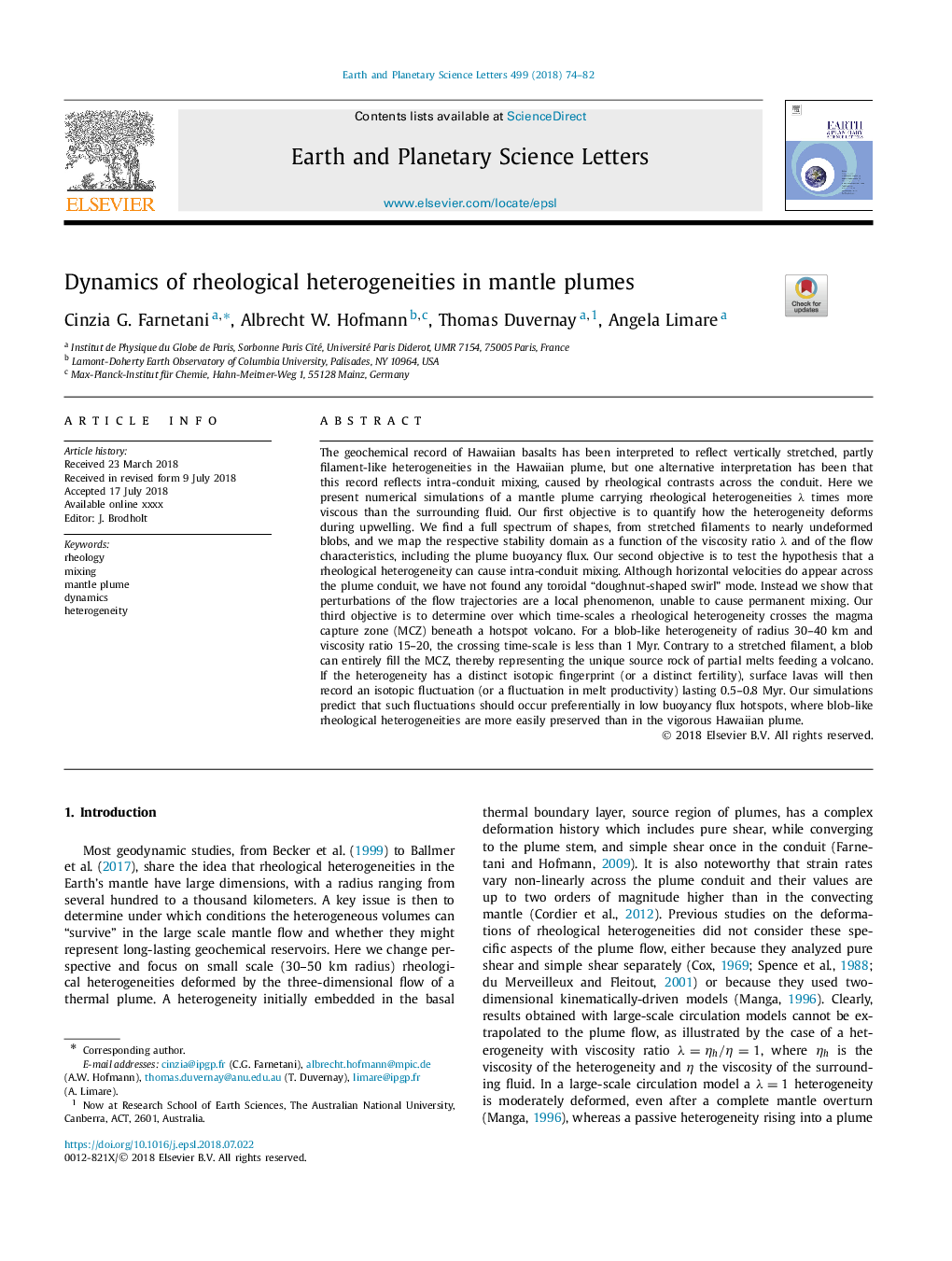| Article ID | Journal | Published Year | Pages | File Type |
|---|---|---|---|---|
| 8906680 | Earth and Planetary Science Letters | 2018 | 9 Pages |
Abstract
The geochemical record of Hawaiian basalts has been interpreted to reflect vertically stretched, partly filament-like heterogeneities in the Hawaiian plume, but one alternative interpretation has been that this record reflects intra-conduit mixing, caused by rheological contrasts across the conduit. Here we present numerical simulations of a mantle plume carrying rheological heterogeneities λ times more viscous than the surrounding fluid. Our first objective is to quantify how the heterogeneity deforms during upwelling. We find a full spectrum of shapes, from stretched filaments to nearly undeformed blobs, and we map the respective stability domain as a function of the viscosity ratio λ and of the flow characteristics, including the plume buoyancy flux. Our second objective is to test the hypothesis that a rheological heterogeneity can cause intra-conduit mixing. Although horizontal velocities do appear across the plume conduit, we have not found any toroidal “doughnut-shaped swirl” mode. Instead we show that perturbations of the flow trajectories are a local phenomenon, unable to cause permanent mixing. Our third objective is to determine over which time-scales a rheological heterogeneity crosses the magma capture zone (MCZ) beneath a hotspot volcano. For a blob-like heterogeneity of radius 30-40 km and viscosity ratio 15-20, the crossing time-scale is less than 1 Myr. Contrary to a stretched filament, a blob can entirely fill the MCZ, thereby representing the unique source rock of partial melts feeding a volcano. If the heterogeneity has a distinct isotopic fingerprint (or a distinct fertility), surface lavas will then record an isotopic fluctuation (or a fluctuation in melt productivity) lasting 0.5-0.8 Myr. Our simulations predict that such fluctuations should occur preferentially in low buoyancy flux hotspots, where blob-like rheological heterogeneities are more easily preserved than in the vigorous Hawaiian plume.
Related Topics
Physical Sciences and Engineering
Earth and Planetary Sciences
Earth and Planetary Sciences (General)
Authors
Cinzia G. Farnetani, Albrecht W. Hofmann, Thomas Duvernay, Angela Limare,
